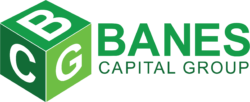All that glitters is not Gold
Though it’s still great to win one, the gold medals awarded at the Tokyo Olympics are mostly silver with roughly only 6 grams of gold plating. With the 550 grams of silver, the actual metal value is close to $800. (A real ‘solid gold’ medal would be worth nearly $36, 000!) Though the Fed has grown its balance sheet to $8.221 trillion – enough to buy over 10 million of the ‘plated’ gold medals, they won’t be winning any. While athletes are running 100 meters in 9.6 seconds and football players cover 40 yards in 4.3, the Fed might take 2 or 3 years to get past 25 bps. Not that they’re trying of course – they’re clearly saving their energy for the right event. Thus far, they’re on the very–tough balance beam– struggling not to fall while seeking a dismount. They’ve gone past the allowed time and their exit could turn into a marathon – one of those long rate increasing campaigns.
Quick Links
As widely expected, the FOMC left rates unchanged in their policy statement last Wednesday (07/28) but did open the door to talking about tapering. While we thought the use of ‘a ways’ off was ‘perfectly vague’ for the timing of hiking rates, the Fed used some more definitive language in their statement concerning tapering asset purchases. Setting a timeframe, they said: “Last December, the Committee indicated that it would continue to increase its holdings of Treasury securities by at least $80 billion per month and of agency mortgage–backed securities by at least $40 billion per month until substantial further progress has been made toward its maximum employment and price stability goals. Since then, the economy has made progress toward these goals, and the Committee will continue to assess progress in coming meetings.” When the committee uses the term ‘coming meetings’ they are usually referring to the next 2 or 3 meetings. We think the Fed will take the opportunity of their annual symposium during their August 26th–28th retreat in Jackson Hole, Wyoming to establish a plan. That should allow an announcement in their September meeting. The premise is that progress has been made and purchases are less necessary.
The FOMC made the point that their strong policy support coupled with progress on vaccinations have continued to strengthen economic activity and employment, while making it clear that the “path of the economy continues to depend on the course of the virus.” The decision was once again unanimous as has been every vote for 2021 and since the 2 dissents from last September (2020).
As the Bond Market Review expected, the Fed doubled down on distance versus detail. Fed Chair Jerome Powell said “we’re clearly a ways away” from hiking rates. We liked the unintended use of ‘away away’ to push beyond the horizon. To reinforce that line of thought, Powell said: “We’re not there. And we see ourselves as having some ground to cover to get there.” He also said the committee took “a first deep dive” into the timing and method for tapering asset purchases, with no specifics other than the “coming meetings” in their statement. Speaking to that future event, he said: “We’re making progress. We expect further progress and if things go well we will reach that goal.” That sounded like telling your kids that Disney World is only a few exits away. Fed Governor Lael Brainard used similar language. She said: “Employment has some distance to go” in getting to levels where the Fed could taper purchases or consider rate hikes. Fed Governor Christopher Waller said tapering could begin in October with “an announcement by September.” St. Louis’ James Bullard is also for a September decision – and to cease purchases by March 2022.
Looking Ahead
- Equity cycles show another low cycle due near August 5th.
- Bond yields should begin to trade higher into a trend–change near August 11th – and then drop again!
Treasuries, Agencies, and MBS
Until recent years, U.S. bond yields were priced at positive spreads to consumer prices. The 10–year yield was usually at a healthy 1.5 to 2.5% over CPI (Consumer Prices) to boot! Of course, for anything to be ‘upside down’ over the past year is no surprise to anyone. Most of us in ‘the way we were’ generation find what passes for news to be quite absurd, so why should disinflationary yields in the face of multi–decade–high inflation raise an eyebrow? That generation assumed we’d be retiring and ‘clipping coupons’ from tax–free municipal bonds, even if those yields were low relative to alternatives. It should be no surprise that according to some metrics, ‘real yields’ are below –4% with inflation at current levels. (That means someone is ‘clipping’ our coupons!) A rough calculation would be 10–year yields near 1.18% less inflation near 5% (or more). If things were not upside down, 10–year yields would be in the 6% to 7% range with inflation pushing 5% or so (even if only ‘transitory’). That’s obviously not going to happen anytime soon – with the Fed’s and foreign central bank’s QE programs still active and with those entities doing their best to hold rates near zero.
Though yields were lower on July 20th, the 10–year note closed at its lowest level (1.17%) on Monday since early February. We would have preferred that yields had risen a bit more into the July 27th trend–change but they did turn down with the cycle. Yields should pop up again into a window due between August 9th and 11th. After the 11th, bond cycles point to lower yields. Yields have fallen for 6 weeks and were lower by 1.5, 2, 5.5, and 2.5 bps last week for the 2, 5, 10, and 30–year Treasury sectors. The first 2 days of August saw yields drop another 1.5, 4, 5, and 5 bps for those sectors. Though we expect mortgage rates to ease again, 30–year Freddie Mac mortgage rates rose from 2.78% to 2.80% last week while 15–year rates fell .02% to 2.10%. Household debt has been rising at the fastest pace since 2013 – rising $313 billion to $14.96 trillion as of June. Much of this debt is coming from the boom in the mortgage market. Thinking back to the financial crisis, what could go wrong???
Last Monday (07/26), the U.S. Treasury sold $60 billion 2–year note at .213%. Demand fell to June though the auction was well received. The buying group that includes foreign central banks accounted for 52.8% of the issue versus 50.6% in June. $61 billion 5–year notes brought .71% on Tuesday (07/27) – the lowest yield since February. Demand was good and the same strength as in June. Foreign buying rose from 57.6% in June to 58.1% of this offering. After skipping ‘Fed day’, $62 billion 7–year notes were sold at 1.05% on Thursday (07/29). While the yield was the lowest since January, demand was lower versus June and the auction was not as well received as the 2 and 5–year. Foreign buying fell from 60.0% in June to 58.4% of this offering. Next week, the Treasury will auction 3–year notes on Tuesday (08/10), 10–year notes on Wednesday (08/11), and 30–year bonds on Thursday (08/12).
Economics
The jobless claims numbers have been a little higher for the past 2 weeks leading us to believe the July payroll report due on Friday may be weaker than expected. Into July 17th, Initial Jobless Claims rose 56K to 424K – the highest since May. They fell 24K to 400K last week – still elevated to recent data and more than expected. Continuing Claims fell 3K to 3,262K but then rose 7K to 3.269 million. Americans on benefits of some type rose again to over 13 million – though we expect next week’s JOLTs data will reveal there are still over 9 million available jobs.
Consumer Comfort fell .7 points to 51.5 but then rose 1.7 points to 53.2 over the past 2 weeks – still lower to 4 weeks ago and well below the pandemic peak of 56.9 from June 20th. Personal Finances improved by .3 and 2 points over the past 2 weeks to a 1–month high 65.7. The Buying Climate rose a net .3 points over 2 weeks and is 5.3 points below its pandemic peak also from June 20th. Complaints about higher prices drove the University of Michigan surveys lower. Sentiment dropped from 85.5 to 81.2. Current Conditions fell from 88.6 to 84.5. Expectations were 4.5 points lower to 79. The one positive was inflation expectations easing by a slight .10% to 4.70%. The Conference Board’s Consumer Confidence survey bucked the trend with a slight but 6th monthly increase from 128.9 to a new pandemic high of 129.1. The Present Situation was modestly better from 159.6 to a new pandemic high of 160.3. Expectations were slightly lower – falling .1 to 108.4.
Second–quarter GDP fell far short of expectations of 8.40% with 6.50% growth. Q1 2021 GDP was revised .10% lower to 6.30% – still yielding 2 respectable quarters! Q2 Personal Consumption came in at 11.80% for one of the biggest increases since the ‘50s. The GDP Price Index was hotter than the 5.40% expected with a 6.00% increase. Core PCE (ex food & energy) rose 6.10%. The Employment Cost Index rose .70%. The first 2 estimates of Q3 GDP according to the Atlanta Fed’s GDP–Now model have been 6.1% and 6.3% – right on top of 2021 data to date. The International Monetary Fund is expecting global growth near 6% for 2021. Global growth fell by 3.2% in 2020. The IMF expects the U.S. to grow near an upgraded 7% for 2021.
While Personal Income rose by .10% in June, Spending rose by 1.00%! With spending up, the savings rate fell to the lowest level since February 2020. The Fed’s favorite inflation gauge rose .50% for a second month. The PCE Deflator held at 4.00% year–over–year. Core prices rose by .40%. The annual core (ex food & energy) for Personal Consumption Expenditures rose from 3.40% to a 3.50% annual pace. CPI and PPI aside, even the Fed’s key inflation gauge is rising at the quickest rate since 1991 – or 30 years!
ISM Manufacturing slowed from 60.6 to 59.5. Prices Paid actually contracted from 92.1 to 85.7. New Orders slipped from 66 to 64.9 but Employment rose from 49.9 to 52.9. MNI Chicago PMI (purchasing managers) rose from 66.1 to 73.4. The Chicago Fed’s National Activity Index fell from .26 to .09. Dallas Fed Manufacturing Activity fell from 31.1 to 27.3 but Kansas City rose 3 points to 30 and Richmond was 1 point higher to 27. The Leading Index rose .70% in June. Factory Orders rose 1.50% in June – reaching the best level since 2018. May Factory Orders were revised .60% higher to 2.30%. Ex transportation, orders rose by 1.40%. Orders for Durable Goods rose by .90% in June and were .50% higher ex transportation. Orders for Capital Goods (business investment) rose by .70%.
Vehicle Sales fell off a 15.36 million annual pace to 14.75 million in July. In June, the merchandise trade deficit (Advance Goods Trade Balance) widened from $88.2 billion to $91.2 billion. Retail Inventories rose .30% while Wholesale Inventories grew by .80%.
Home prices have been increasing at record rates, and it’s hampering sales. The FHFA House Price Index rose 1.70% in May. The S&P Case–Shiller House Price Index accelerated from 14.84% to a record annual jump of 16.61% in May (year–over–year). Metro home prices (20–city index) rose 1.81% and increased year–over–year from 15.01% to 16.99%. Sales of Existing Homes just rose for the first time in 5 months in June. Sales rose 1.38% to an annual pace of 5.86 million units. 23% of those deals were cash – up from 16% last year. However, New Home Sales fell by 6.63% to 676K annual units – for the slowest pace since last April (2020). Pending Home Sales declined by 1.90% in June – mostly due to higher prices. June Construction Spending rose by .10%.
Wednesday is set for MBA Mortgage Applications (which fell 4.0% and then rose by 5.70% over the past 2 weeks), the ISM Services Index, and a look into Friday’s job numbers from ADP Employment Change (private payrolls). Thursday gives us the June Trade Balance (deficit) and will offer more July jobs input from Challenger Job Cuts and jobless claims. Friday reveals July payrolls and related data including Labor Force Participation and the U.S. Unemployment Rate. Also due are June data for Consumer Credit and Wholesale Trade Sales & Inventories. Q2 Mortgage Delinquencies and MBA Mortgage Foreclosures are due sometime next week. Next Monday (08/09) is set for JOLTS Job Openings for June. Tuesday follows with NFIB Small Business Optimism and Q2 data for Nonfarm Productivity and Unit Labor Costs.
Equities
August appeared to be headed off to a good start with the Dow Industrials rising 256 points or .73% to a record high. However, prices reversed leaving the Dow .28% lower on Monday to kick off August. A 278–point gain today put August back in the black by .52% – though the rally fell short of Monday’s high. The Nasdaq was slightly higher Monday (by .06%) but the S&P mimicked the Dow with a nice early gain that was reversed with a lower close (by .18%). After today, the Nasdaq was ahead by .60% for the week and early month. The S&P made its new high last Thursday 7/29. The high on the Nasdaq came on Monday, July 26th. The next trend–change low in stocks is due near August 5th. July gave the S&P its 6th month of gains with a 2.27% jump. The Nasdaq rose 1.16% for a 2nd gain and the Dow reversed a small June loss of –.08% with a 1.25% gain. The Dow Transports lost 2.82% and banks fell by 2.50% – each for a second monthly loss.
A pullback on Friday left the Dow Industrials 126.08 points or .36% lower for the week to 34,935.47. The Nasdaq ended the week 1.11% lower and the S&P lost .37%. The S&P rallied back today to stand .63% higher for August. The Dow Transports fell 2.00% but are .87% higher this week. Last week, bank stocks outperformed other sectors with a .82% gain and they’re 1.18% higher for the first 2 days of August. While U.S. markets have been holding up quite well, China’s Shanghai Composite fell 6.47% in only 4 days into last Wednesday (07/28) – to the lowest levels since December. Hong Kong fell 10.73% in only 3 days and was down over 20% to its February top.
Other Markets
Crude Oil ended July .65% higher after an early month 4.78% gain. Crude gained 2.61% last week but has tumbled 4.58% for the first 2 days of August trading. Commodities gained .68% last week but are 1.28% lower this week. Gold is holding above $1,800. It rose .60% last week and 2.31% in July. Gold is .14% lower this week. The U.S Dollar has fallen since July 21st and is trading at its lowest levels since the end of June. It dropped .80% last week and is .11% lower this week. The Japanese Yen rose .75% last week and is .62% better this week. The Euro surged .84% last week but is .05% lower this week. Corn lost .05% last week but is .64% higher this week. Cotton lost .54% but then rose .52%.
The Olympics can be a real equalizer: “My computer beat me at chess… so I beat it at kickboxing.” Demetri Martin
“There are two ways to pass a hurdle: leaping over or plowing through … There needs to be a monster truck option!” Jeph Jacques
Doug Ingram, Financial Economist
Additional Information is Available on Request
Banes Capital Group, LLC (BCG) has been granted permission by the author, Doug Ingram and Strategic Technical Initiatives, to distribute this market commentary (MC). All views, opinions and estimates included are his as of this date – and are subject to change without notice. Mr. Ingram’s views, opinions, and estimates are not necessarily those of BCG and there is no implied endorsement by BCG of any of the information contained within this MC (which may in fact directly conflict with those being published and distributed by BCG, whether or not contemporaneous). In the event of such conflict, BCG is not under any obligation to identify to you any such conflicts. This MC is for informational purposes only and does not constitute a solicitation or offer to buy or sell any securities, futures, options, foreign exchange or any other financial instrument(s) and/or to provide any investment advice and/or service. Although the information presented has been obtained from sources believed to be reliable, we cannot guarantee or assume any responsibility for the accuracy or completeness of the information shown herein.







